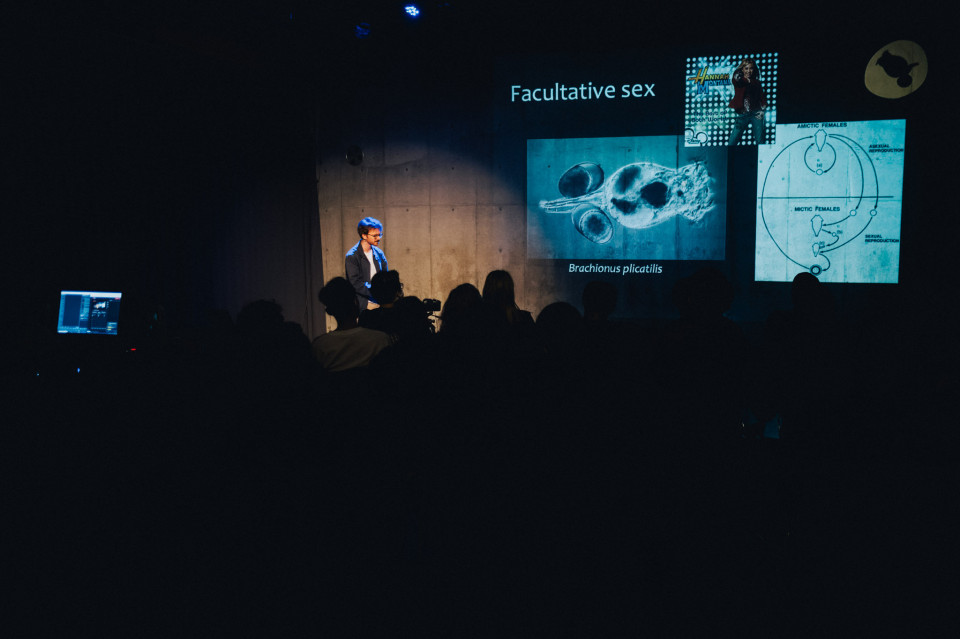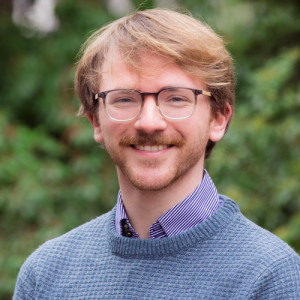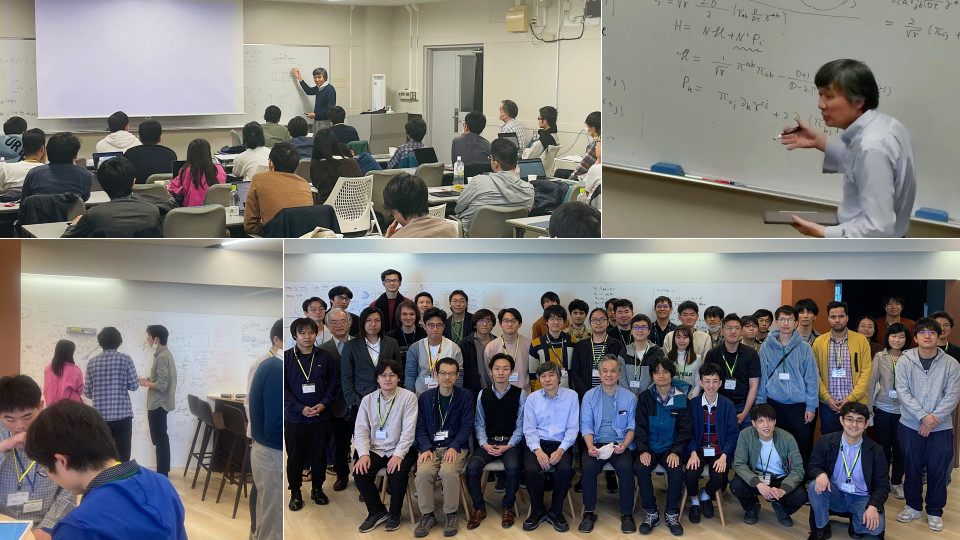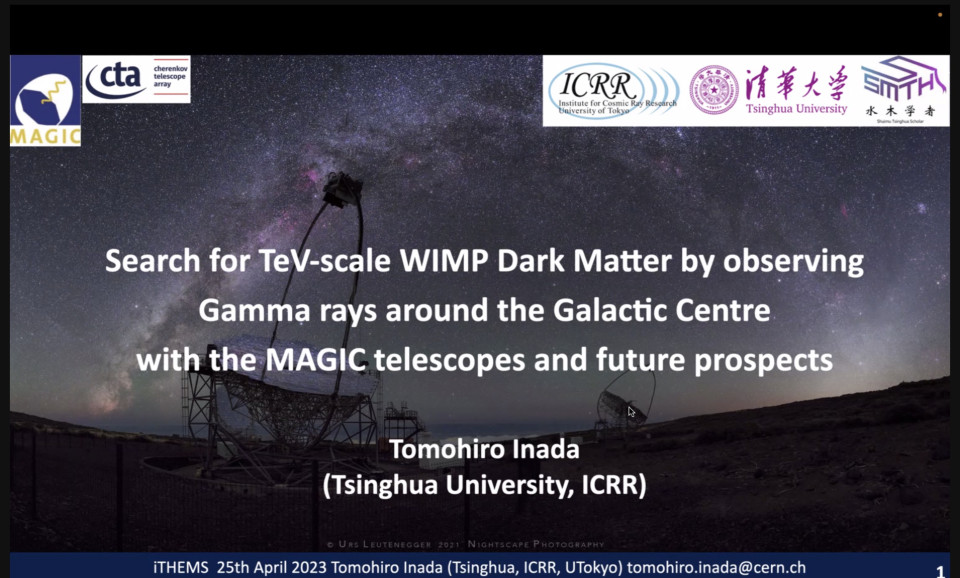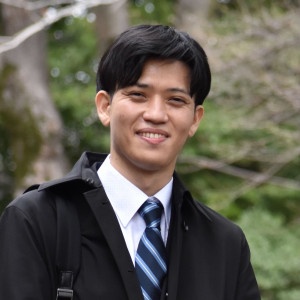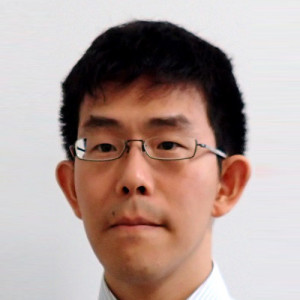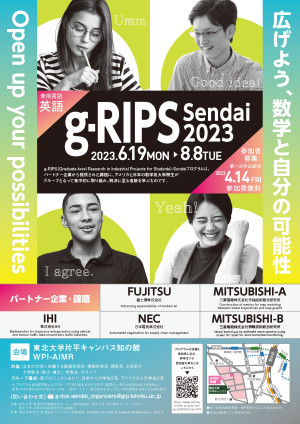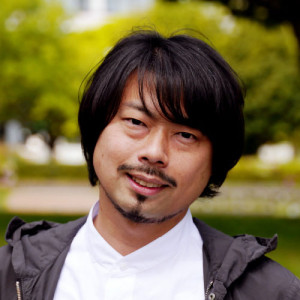Volume 251
Back to Newsletter List
Hot Topic
Thomas Hitchcock gave a short talk at Nerd Nite Tokyo on April 21, 2023
2023-05-17
On Friday 21st April, Thomas Hitchcock gave a short talk at Nerd Nite Tokyo entitled “Sex Education: reproductive diversity across the tree of life”. There he talked to a general audience about the range of ways that organisms may reproduce, from those organisms that simply make copies of their own genes (asexual reproduction), to those that mix them with others (sexual reproduction), and those that can do both (facultative sex). He discussed the different mechanisms that organisms may use to decide whether to reproduce as a female (producing eggs) or male (producing sperm), and how genes may pass differently to offspring through these two routes, illustrating these ideas with stories about spoonworms, fungus gnats, and rotifers. Finally, he stressed how evolution may work differently in these different reproductive systems, and so the importance of understanding this diversity for guiding our efforts in conservation, agriculture, and medicine.
Seminar Report
Spring Workshop on Quantum Gravity on April 26, 2023
2023-05-15
Spring Workshop on Quantum Gravity, the first one in the lecture series Quantum Gravity Gatherings and co-sponsored by NCTS, was a great success with about 50 participants, including some from Taiwan.
First, Prof. Kawai's intensive lecture on quantum gravity was wonderful. In the basic part of the first half, he explained the physical aspects of the ordinary formulas found in textbooks on general relativity, from a quantum theoretical standpoint, and transformed the equations consistently, to arrive at physically clear results about quantum gravitational fields. In the latter part, he described the features of field-theoretic quantum gravity and its limitations. Through these, he showed us the importance of researching quantum gravity step by step from a fundamental point of view.
All participants were interested in quantum gravity, and there was an atmosphere of togetherness in the room. During the lecture, a variety of questions, from the simple to the fundamental, were raised. During breaks, small discussions spontaneously occurred here and there in the common space. And in the short talk sessions, we were able to share each other's research and interests. The banquet on the first day of the event was a great opportunity to deepen friendship. Thus, this event provided many opportunities for learning, research, and exchange for the younger generation.
Reported by Yuki Yokokura
Spring Workshop on Quantum Gravity
April 26 (Wed) - 28 (Fri) 2023
Seminar Report
DMWG Seminar: DM-line search in the Galactic Center with MAGIC telescope
2023-05-12
Among kinds of dark matter (DM) candidates, weakly interacting massive particles (WIMPs) are the most intensively studied ones along their theoretical background and expectations for the signals in on-Earth experiments. However, up to now, our understanding of the regime of m>O(1) TeV is still limited since we cannot produce them at colliders and cannot expect a sufficient interaction rate at underground recoil detectors. High-energy astrophysical observations are powerful in probing that regime and projects all over the world are now searching for corresponding signals.
When we look for signatures of DM from astrophysical data, it is necessary to consider contributions from astrophysics very carefully. The key signatures could be the morphology of the emission, the spectrum, and correlating signals in other kinds of observations, variabilities, and so on. If DM particles annihilate to produce photon pairs, the spectrum should show a monochromatic peak corresponding to the mass of DM, hence it is distinctive against the astrophysical emissions.
MAGIC telescope, which locates in the Northern Hemisphere, only considers target objects in the northern sky previously. However, it actually can see the Galactic Center in a large inclination. For this case, the threshold of the analysis is worsened but the effective area is improved, then it can achieve a good sensitivity to high-energy emissions. Using 223h of observation at the Galactic Center with MAGIC, the line emission search is carefully performed. The determination of the "off" takes an important role in not overestimating the sensitivity and the sliding window technique is adopted regarding this point. The uncertainty of the DM density of the region of interest is also carefully discussed by performing the analysis applying both the cuspy and cored profiles.
No signatures of the monochromatic gamma-ray from DM annihilation are found in this analysis hence we obtain upper limits of the annihilation cross-section. The sensitivity is comparable to the flux level of a well-motivated Wino DM model which should exhibit annihilation lines around E~3TeV. This means that we are now approaching the era that to probe detailed particle models of DM with astrophysical observations. In the near future, observations with the Cherenkov Telescope Array will start operations and we can look into the detail of the models in combination with particle physics communities!
Reported by Nagisa Hiroshima
Search for TeV-scale WIMP Dark Matter by observing Gamma rays around the Galactic Centre with the MAGIC telescopes and future prospects.
April 25 (Tue) 11:00 - 12:00, 2023
Upcoming Events
Seminar
iTHEMS Theoretical Physics Seminar
Statistical methods to probe binary stellar evolution with ZTF and LISA data
May 23 (Tue) 13:30 - 15:00, 2023
Lucy McNeill (JSPS Fellow, Department of Physics, Division of Physics and Astronomy, Graduate School of Science, Kyoto University)
The Laser-Interferometer-Space-Antenna (LISA) will be capable of detecting all galactic double neutron star binaries (DNSBs) with orbital periods < 20 minutes, as well as 10-100’s of thousands of double white dwarf binaries. I will present our method to use LISA detections to constrain the formation frequencies of galactic DNSBs, which are determined by supernova physics and various mass exchange processes. Next, I summarise the key differences in DNSBs and white dwarf binaries (WDBs) in the context of future LISA observations, as well as the current Zwicky Transient Facility (ZTF) for the latter. Then we will examine the current catalogue of short period white dwarf binaries (orbital periods < 1 hour) detected by ZTF so far, including the first ever measurement (Burdge et al. 2023) of the temperature of a mass transferring white dwarf in a binary. Here I will make the case that taken together, these observations are in conflict with the theoretical picture commonly used in Galactic modelling- specifically related to cooling and mass transfer leading to WDB mergers. However, heating from tidal interactions may explain and mediate this inconsistency. Finally I will put these results into context regarding preparing for the unprecedented data set of galactic white dwarf binaries from LISA in the 2030s.
Venue: Hybrid Format (3F #359 and Zoom), Main Research Building, RIKEN Wako Campus
Event Official Language: English
Seminar
iTHEMS Math Seminar
Hydrodynamic limit and the fluctuating hydrodynamics for large-scale interacting systems
May 24 (Wed) 14:00 - 16:30, 2023
Kohei Hayashi (Visiting Researcher, RIKEN Interdisciplinary Theoretical and Mathematical Sciences Program (iTHEMS))
In these decades, a great deal of works has been devoted to understand macroscopic phenomena, such as diffusion, aggregation or pattern formation, from the viewpoint of microscopic systems. Hydrodynamic limit, or fluctuating hydrodynamics, is a fundamental framework to explain the macroscopic behavior of physical quantities in mathematically rigorous ways from a system of the vast numbers of microscopic agents under random interactions, which system is called the large-scale interacting system. In this framework, our central aim is to derive partial differential equations (PDEs) which describe time evolution of some macroscopic quantities, starting from the large-scale interacting systems; hydrodynamic limit is a procedure to derive deterministic PDEs with help of the law of large numbers, whereas stochastic PDEs are derived under the scale of the central limit theorem by fluctuating hydrodynamics. In this talk, I would like to explain basic concepts of hydrodynamic limit and fluctuating hydrodynamics, through some simple models. In the first part, I will give a concise exposition on Markov processes as preliminaries and then state some results on scaling limits of simple exclusion processes as a pedagogical example. In the second part, I will talk about recent progress on universality which appears in fluctuating hydrodynamics. Especially, I would like to talk about the universality of the Kardar-Parisi-Zhang equation, and its mathematical background.
Venue: Seminar Room #359, 3F Main Research Building, RIKEN / via Zoom
Event Official Language: English
Seminar
iTHEMS Biology Seminar
Molecular and evolutionary bases of Pieris butterflies for overcoming diverse chemical defenses in their host plants
May 25 (Thu) 16:00 - 17:00, 2023
Yu Okamura (JSPS Research Fellow PD, Department of Biological Sciences, Graduate School of Science, The University of Tokyo)
In terrestrial ecosystems, plants and herbivorous insects account for more than half of the described species and play quite important ecological roles. Plants and herbivorous insects have strong chemical interaction as plants defend themselves with various defense compounds such as secondary metabolites and herbivores adapt to it by evolving detoxification mechanisms. Larvae of Pieris butterflies feed on Brassicaceae plants as the main host. Brassicaceae plants contain diverse glucosinolates (GLS) as a main chemical defense, which can be rapidly hydrolyzed into toxic isothiocyanates by a plant enzyme called myrosinase upon tissue damage. Larvae of Pieris butterflies are known to express nitrile-specifier protein in their gut and this can redirect toxic breakdown products of GLSs to less toxic metabolites. Although NSP is considered an evolutionary key innovation for Pieridae that enabled these butterflies to colonize GLS-containing plants, it has been largely unclear whether NSP is enough for Pieris butterfly larvae to overcome the diverse types of GLS they encounter in their host plants. In this seminar, I would like to introduce our recent findings showing that Pieris butterfly larvae not only use NSP but also use its ortholog major allergen (MA) to overcome the diverse types of GLS in their Brassicaceae host plants. We found that Pieris larvae show fine-tuned regulation of those two adaptive genes depending on the chemical profiles of their host plants. Furthermore, those two adaptive genes have different evolutionary trajectories in macro- and micro-evolutionary scales among Pieris species or populations associated with their pattern of host plant usage. Moreover, with an approach using CRISPR/Cas9 genome editing, we showed that both NSP and MA have different but complementary roles in disarming GLS-based defenses in their host plants and that both genes are crucial for Pieris in overcoming their host plant’s major chemical defense. Those highlight that having both NSP and MA is a key for Pieris butterflies to overcome the diverse types and GLS and, consequently, adapt to a wider range of Brassicaceae hosts. Our results illuminate that gene duplication, functional differentiation, and the evolution of gene regulation mechanisms are all crucial for herbivorous insects to overcome co-evolving chemical defenses in their host plants.
Venue: via Zoom
Event Official Language: English
Seminar
iTHEMS Theoretical Physics Seminar
Spectral correlations and scrambling dynamics in Sachdev-Ye-Kitaev type models
May 30 (Tue) 13:30 - 15:00, 2023
Masaki Tezuka (Assistant Professor, Division of Physics and Astronomy, Graduate School of Science, Kyoto University)
Note: Due to unexpected trouble, we have made the decision to postpone the seminar scheduled for February 21 to May 30. Sorry for the trouble.
Abstract:
The Sachdev-Ye-Kitaev (SYK) model, proposed in 2015, is a quantum mechanical model of N Majorana or complex fermions with all-to-all random four-body interactions. The model has attracted significant attention over the years due to its features such as the existence of the large-N solution with maximally chaotic behavior at low temperatures and holographic correspondence to low-dimensional gravity.
The sparse version of the SYK model reproduces essential features of the original model for reduced numbers of disorder parameters. We recently proposed [1] a further simplification, where we set the nonzero couplings to be +1 or -1 rather than sampling from a continuous distribution such as Gaussian. This binary-coupling model exhibits strong correlations in the spectrum, as observed in the spectral form factor, more efficiently in terms of the number of nonzero terms than in the Gaussian distribution case. We also discuss the scrambling dynamics with the binary-coupling sparse SYK model, comparing the model with the original model as well as the SYK model with random two-body terms [2], where the localization of the many-body eigenstates in the Fock space has been quantitatively studied [3,4].
References
- Masaki Tezuka, Onur Oktay, Enrico Rinaldi, Masanori Hanada, and Franco Nori, Binary-coupling sparse Sachdev-Ye-Kitaev model: An improved model of quantum chaos and holography, Phys. Rev. B 107, L081103 (2023), doi: 10.1103/PhysRevB.107.L081103, arXiv: 2208.12098
- Antonio M. García-García, Bruno Loureiro, Aurelio Romero-Bermúdez, and Masaki Tezuka, Chaotic-Integrable Transition in the Sachdev-Ye-Kitaev Model, Phys. Rev. Lett. 120, 241603 (2018), doi: 10.1103/PhysRevLett.120.241603
- Felipe Monteiro, Tobias Micklitz, Masaki Tezuka, and Alexander Altland, Minimal model of many-body localization, Phys. Rev. Research 3, 013023 (2021), doi: 10.1103/PhysRevResearch.3.013023
- Felipe Monteiro, Masaki Tezuka, Alexander Altland, David A. Huse, and Tobias Micklitz, Quantum Ergodicity in the Many-Body Localization Problem, Phys. Rev. Lett. 127, 030601 (2021), doi: 10.1103/PhysRevLett.127.030601, arXiv: 2012.07884
Venue: Hybrid Format (3F #359 and Zoom), Main Research Building, RIKEN Wako Campus
Event Official Language: English
Seminar
ABBL-iTHEMS Joint Astro Seminar
Quantum uncertainty of fields and its effect on entanglement generation in quantum particles
May 31 (Wed) 14:00 - 15:15, 2023
Yuki Sugiyama (Ph.D. Student, Department of Physics, Graduate School of Science, Kyushu University)
The unification of gravity and quantum mechanics is one of the important problems. To elucidate the theory of quantum gravity, it is becoming more and more important to get any hint of the quantum nature of gravity. In particular, the quantum-gravity-induced-entanglement of masses (QGEM) scenario, which is expected to observe the quantum nature of non-relativistic gravity, has recently attracted great attention. In this talk, we show the effect of relativistic fields on entanglement generation based on quantum field theory. We also discuss the relationship between the entanglement generation and quantum uncertainty of the fields.
Venue: Seminar Room #359, 3F Main Research Building, RIKEN / via Zoom
Event Official Language: English
Workshop
iTHEMS Science Outreach Workshop 2023
June 16 (Fri) - 18 (Sun) 2023
This year's meeting on "Outreach of RIKEN iTHEMS 2023@Sendai&Zoom" will be held from FRI June 16 to SUN June 18, as a face-to-face meeting at TOKYO ELECTRON House of Creativity of Tohoku Forum for Creativity in cooperation with iTHEMS SUURI-COOL (Sendai) using ZOOM for the necessary part as well.
Venue: TOKYO ELECTRON House of Creativity, Katahira Campus, Tohoku University / via Zoom
Event Official Language: Japanese
School
Co-hosted by iTHEMS
g-RIPS-Sendai 2023
June 19 (Mon) - August 8 (Tue) 2023
The Research in Industrial Projects for Students (RIPS) program has been held at the Institute for Pure & Applied Mathematics (IPAM) of the University of California, Los Angeles. In 2018, the Advanced Institute for Materials Research (AIMR) at Tohoku University in Sendai launched the g-RIPS-Sendai program in collaboration with IPAM, targeting graduate-level students in mathematical science and related disciplines. Participants from the U.S. and Japan will work on cross-cultural teams on research projects designed by industrial partners. The projects are expected to be of great interest to the partners and offer stimulating challenges to students. For more information on this year's g-RIPS-Sendai 2023, please visit the program website at the related link.
Organizers:
Research Alliance Center for Mathematical Science (RACMaS), Tohoku University
Tohoku Forum for Creativity (TFC), Tohoku University
Advanced Institute for Materials Research (AIMR), Tohoku University
In cooperation with the following organizations:
RIKEN Interdisciplinary Theoretical and Mathematical Sciences Program (iTHEMS)
Institute for Pure & Applied Mathematics (IPAM), UCLA
Venue: Advanced Institute for Materials Research (AIMR), Tohoku University
Workshop
Supported by iTHEMS
6th Workshop on Virus Dynamics
July 4 (Tue) - 6 (Thu) 2023
Catherine Beauchemin (Deputy Program Director, RIKEN Interdisciplinary Theoretical and Mathematical Sciences Program (iTHEMS))
Shingo Iwami (Professor, Graduate School of Science, Nagoya University)
The Workshop on Virus Dynamics is an international meeting held every 2 years. It brings virologists, immunologists, and microbiologists together with mathematical and computational modellers, bioinformaticians, bioengineers, virophysicists, and systems biologists to discuss current approaches and challenges in modelling and analyzing different aspects of virus and immune system dynamics, and associated vaccines and therapeutics. This 6th version of the workshop builds on the success of previous ones held in Frankfurt (2013), Toronto (2015), Heidelberg (2017), Paris (2019) and virtually (2021). It is supported by the Interdisciplinary Theoretical and Mathematical Sciences (iTHEMS) program at RIKEN, by Nagoya University, and by the Japan Science and Technology Agency. Up-to-date information and registration is available via the website. The workshop is for in-person participation only (no virtual or hybrid option).
Venue: Noyori Conference Hall, Higashiyama Campus, Nagoya University
Event Official Language: English
Seminar
ABBL-iTHEMS Joint Astro Seminar
A dynamical model for IRAS 00500+6713: the remant of a type Iax supernova SN1181 hosting a double degenerate merger product WD J005311
July 7 (Fri) 14:00 - 15:15, 2023
Takatoshi Ko (Ph.D. Student, Research Center for the Early Universe (RESCEU), The University of Tokyo)
Iras 00500+6713 is a bright nebula in the infrared, and X-ray observations show it consists of diffuse region and strong illuminated central region. In addition, optical spectral observations have recently revealed that fast wind with about 15,000 km/s is blowing from the massive white dwarf at the center. The properties of this nebula and white dwarf are very similar to those theoretically predicted by the binary white dwarf merger. In addition, its position on the celestial sphere and the extent make it a prime candidate for the remnant of SN 1181, a historical supernova. In this study, we propose that such a multilayered structure is formed by the collision between the remnant of SN 1181 and the stellar wind blowing from the central white dwarf, and succeeded in constructing a model that is consistent with the multi-wavelength observations. The results show that the progenitor of SN 1181 is a binary white dwarf with 1.3-1.9 solar mass and that their merger triggered an explosion that ejected mass with 0.2-0.6 solar mass to form the present object. The extent of the X-ray source concentrated in the center reveals that these winds began blowing within the last 30 years, and we will discuss this property as well.
Venue: Seminar Room #359, 3F Main Research Building, RIKEN / via Zoom
Event Official Language: English
Lecture
Higher Algebra in Geometry
July 31 (Mon) - August 10 (Thu) 2023
Hiro Lee Tanaka (Assistant Professor, Department of Mathematics, Texas State University, USA)
In these lectures, we will shed light on modern tools of higher algebra, where the traditional structures of algebra yield themselves only after controlled deformations. We will introduce infinity-categories, spectra, operads, and other standard tools of the last decade. The main applications will be to encode various higher-algebraic structures that inevitably arise in, and shed light on, geometry and topology. If time permits, we will illustrate how spectra naturally arise in geometric invariants.
The audience is imagined to consist of mathematicians interested in applications of infinity-categorical tools -- so a broad range of geometers (including topologists) and algebraists. From Lecture Two onward, I will assume basic knowledge of algebraic topology (e.g., the material of Hatcher) and homological algebra.
These lectures will be held between July 31 and August 10, each from 10:30 to 12:00, for a total of 8 lectures.
1st Week: Jul 31(mon), Aug 1(tue) - 3(thu)
- Introduction to ideas of higher algebra in geometry, for a general audience.
- Introduction to infinity-categories and to spectra.
2nd Week: Aug 7(mon) - 10(thu)
- Examples in geometry and topology, including invariants of Legendrian links and generating functions.
- Future Directions.
Profile:
Hiro Lee Tanaka is an assistant professor in the Department of Mathematics. After receiving his Ph.D. from Northwestern University and completing postdoctoral work at Harvard University, he conducted research at the Mathematical Sciences Research Institute in Berkeley, California, and at the Isaac Newton Institute in Cambridge, England. His research aims to fuse the higher structures in modern algebra with geometries emerging from both classical mechanics and supersymmetric field theories. Beyond research, Tanaka engages in efforts to create more equitable and supportive environments throughout the mathematics community.
References
- Jacob Lurie, Higher Topos Theory (PDF 4.8MB), doi: 10.1515/9781400830558
- Jacob Lurie, Higher Algebra (PDF 6.9MB)
- Kerodon - an online resource for homotopy-coherent mathematics
- Jacob Lurie, Hiro Lee Tanaka, Associative algebras and broken lines, arXiv: 1805.09587
- Jacob Lurie, On the Classification of Topological Field Theories, arXiv: 0905.0465
- Oleg Lazarev, Zachary Sylvan, Hiro Lee Tanaka, The infinity-category of stabilized Liouville sectors, arXiv: 2110.11754
- Araminta Amabel, Artem Kalmykov, Lukas Müller, Hiro Lee Tanaka, Lectures on Factorization Homology, Infinity-Categories, and Topological Field Theories, arXiv: 1907.00066
- David Ayala, John Francis, Hiro Lee Tanaka, Factorization homology of stratified spaces, arXiv: 1409.0848
- David Nadler, Hiro Lee Tanaka, A stable infinity-category of Lagrangian cobordisms, arXiv: 1109.4835
- David Gepner, An Introduction to Higher Categorical Algebra, arXiv: 1907.02904
Venue: #435-437, Main Research Building, RIKEN Wako Campus / via Zoom
Event Official Language: English
Paper of the Week
Week 3, May 2023
2023-05-18
Title: Embedding and correlation tensor for XRP transaction networks
Author: Abhijit Chakraborty, Tetsuo Hatsuda, Yuichi Ikeda
arXiv: http://arxiv.org/abs/2305.09917v1
Title: Exploring $^3P_0$ Superfluid in Dilute Spin-Polarized Neutron Matter
Author: Hiroyuki Tajima, Hiroshi Funaki, Yuta Sekino, Nobutoshi Yasutake, Mamoru Matsuo
arXiv: http://arxiv.org/abs/2305.08690v1
Title: Tensor category equivariant KK-theory
Author: Yuki Arano, Kan Kitamura, Yosuke Kubota
arXiv: http://arxiv.org/abs/2305.07255v1
Title: First-order phase transitions in Yang-Mills theories and the density of state method
Author: Biagio Lucini, David Mason, Maurizio Piai, Enrico Rinaldi, Davide Vadacchino
arXiv: http://arxiv.org/abs/2305.07463v1
If you would like to cancel your subscription or change your email address,
please let us know via our contact form.
Copyright © iTHEMS, RIKEN. All rights reserved.


